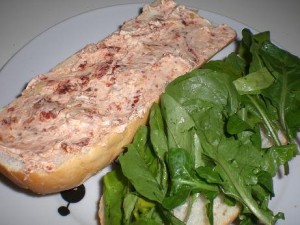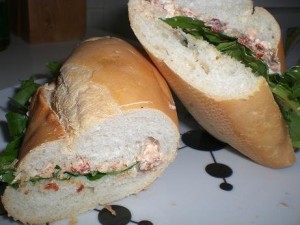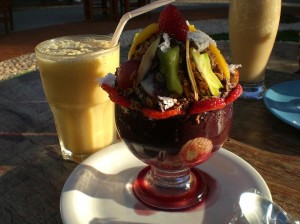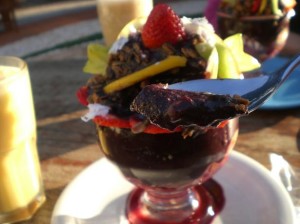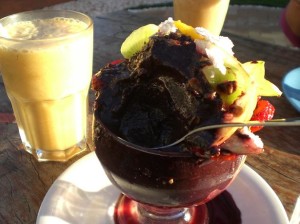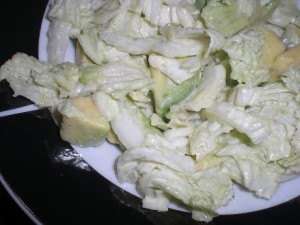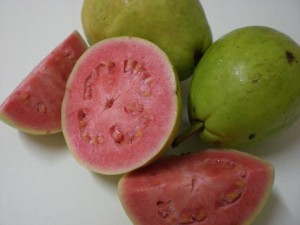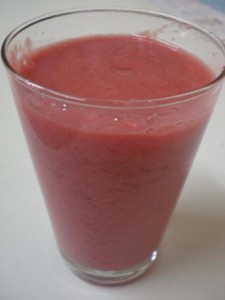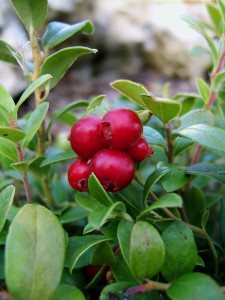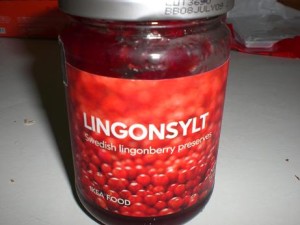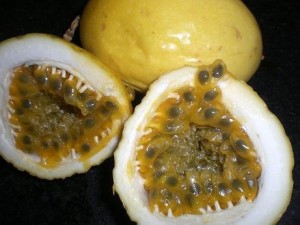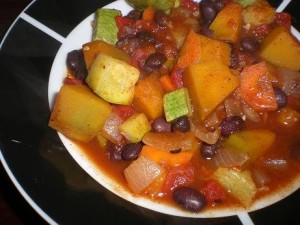 A few weeks ago I came across a recipe for Fall Vegetable Chili in the October issue of Good Housekeeping. It looked really interesting and I thought I’d give it a try.
A few weeks ago I came across a recipe for Fall Vegetable Chili in the October issue of Good Housekeeping. It looked really interesting and I thought I’d give it a try.
Then I started thinking about the different ingredients and some I also had in the fridge so I ended up making some major changes. First, I really wanted to experiment with some pumpkin. I also had some black beans on hand and chopped zucchini leftover from last night.
So this is what I came up with. What makes it a little different than some of the pumpkin chili I’ve come across is that I kept the pumpkin pieces pretty solid. I didn’t want them to be roasted first and turn into mush. I liked the chunky veggies. They gave it a good texture. I also like my chili really spicy.
It made a filling, fall-inspired lunch for my day. It takes a little time with the challenge of chopping up the pumpkin, but it is worth it.
Spicy Pumpkin Vegetable Chili
1 Tbsp. olive oil
1 ½ cups fresh pumpkin (no seeds or skin), chopped into small pieces
1 medium carrot, thinly sliced
1 ½ cups zucchini, chopped
½ medium onion, chopped
1 clove garlic, chopped
2-3 Tbsp. spicy chili powder
1 can diced tomatoes with juice
½ cup water
1 ½ cups black beans, pre-soaked and cooked (no canned in these parts, but use them if you have them)
Salt and Pepper to taste
Heat olive oil in soup pot, add pumpkin. Cook about 5 minutes. Then add carrot, zucchini, onion and garlic. Cook about 5 minutes more, until veggies begin to brown.
Add chili seasoning, cook an additional minute; add tomatoes and water. Simmer covered for 5 to 10 minutes or until veggies reach desired tenderness.
Using a fork, mash ½ cup of black beans. Add the 1 cup of whole beans and ½ cup mashed beans to the chili. Continue to cook 2 to 3 minutes more, heating the beans. Salt and pepper to taste. Makes about 4 servings.
I have a question. Anyone out there eat their chili with a scoop of peanut butter?
I used to eat it with a PB sandwich when I was a kid, dipping the sandwich in the chili. I think the habit started because the standard school cafeteria meal on chili day always included a PB sandwich.
As I got older I skipped the bread and just starting putting a spoonful of PB on the side of the bowl and mixing in a bit with each bite. I love it!

